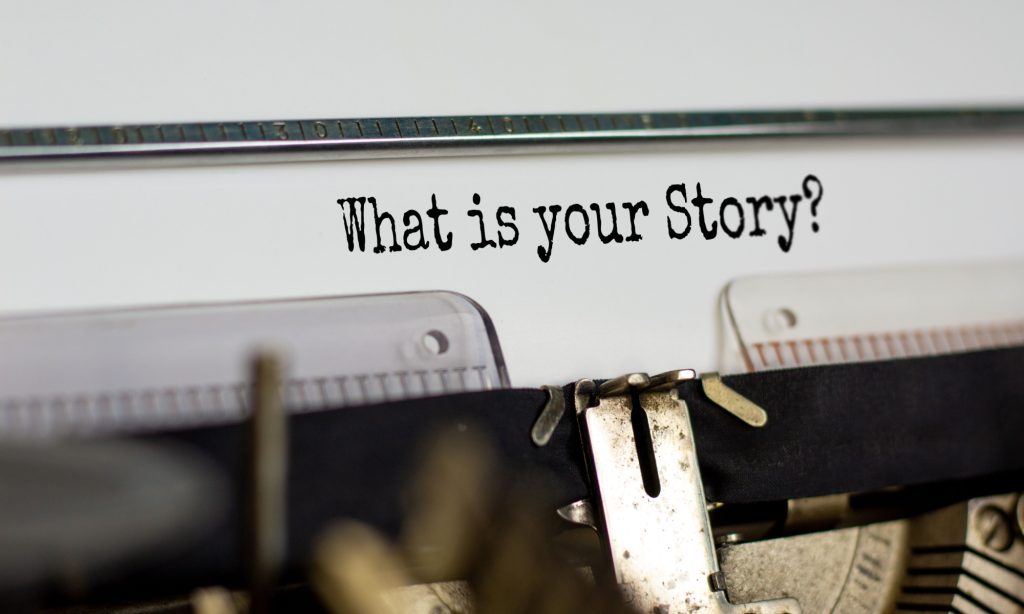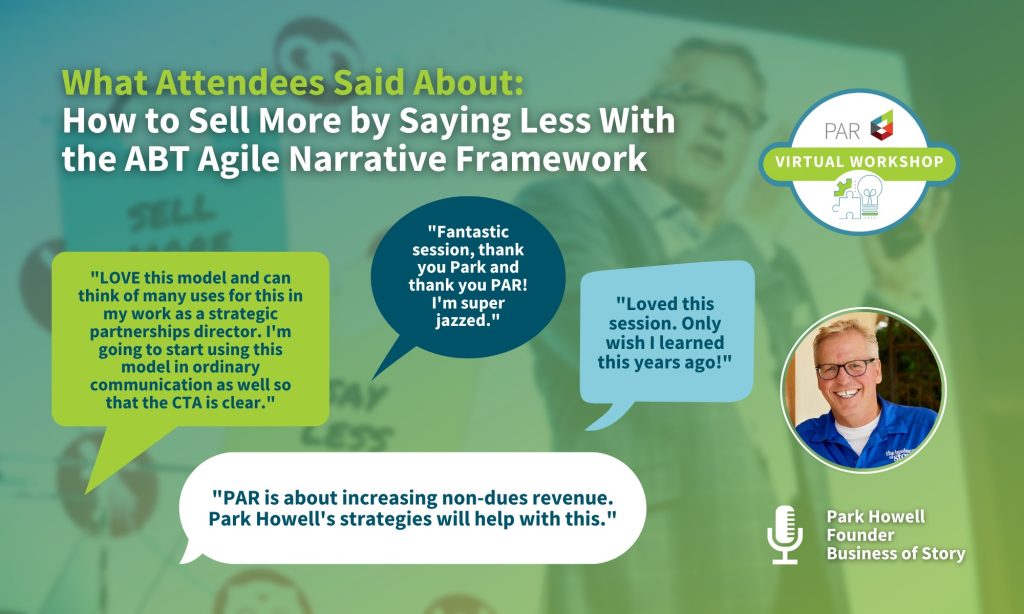Boost Sales Through the Power of Story

By Shannon Reid
While we don’t consciously think about it, our brains are hardwired to respond to storytelling. Whether it’s a children’s fairytale, a compelling episode of a favorite TV show, or a friend recounting a crazy night out, storytelling captures our attention and helps us process information. However, we don’t always create messaging that aligns with storytelling structure.
This is where Park Howell, Founder of Business of Story, comes in. Howell led a webcast, “How to Sell More by Saying Less”, for PAR members designed to introduce his ABT Narrative Framework. This framework allows you to turn all of your messaging into a compelling story that will captivate your audience.
So, why choose storytelling in sales? Here are just a few important benefits to using a narrative structure in business:
1. Think P to P, not B to B: storytelling allows you to inject the personal into your sales process. As Howell notes, “P to P is person to person. This is why storytelling works so well.” When we use a narrative to deliver our messaging, it automatically connects on a personal and relatable level which will get your customers attention.
2. Communicate to eliminate misconceptions: Another benefit of storytelling is ensuring clarity in your messaging. “Storytelling is the software that drives the hardware of our brain”, says Howell. If you are not using a narrative structure, you lose the ability to tap into the natural meaning-making of storytelling: “If our story is not absolutely clear, your audience is going to make up a story about you/your message and it may not be the story you intended”, warns Howell.
3. Go beyond the data: While it is important to gather and convey data about your members and product offerings, statistics alone will not connect with prospects. Structuring that data within a narrative framework will “light up the theater of the mind”, states Howell. Even numbers can reach the ‘emotional center’ of your audience when positioned properly.
So, storytelling is important! But how do we get from knowing that to creating stories for our customers?
The ABT Narrative Framework is built around the three main forces of story: Agreement, Contradiction, and Consequence. Create a positive statement of agreement (And), insert a Contradictory Problem (But), and finish with a Consequence (Therefore). This structure can be applied to an email, marketing copy, or a live sales conversation.
An example of the ABT framework in action comes from Karim Cheikh with the Society for Clinical Research Sites (SCRS). Cheikh says SCRS exists to provide the research site community with advocacy, connection, education and mentorship. During the live session, Howell helped Cheikh use the framework to rethink how SCRS articulates its value to current and potential members. By acknowledging the vital work of sites as well as the challenges they experience, Cheikh could clearly articulate SCRS's value in a message directed to potential members:
You direct a clinical research site and if you have powerful advocacy for your work then you will prosper. But, success for your site is difficult because of your ever changing needs, restrictions and challenges that often go ignored by the outside world. Therefore, having a global organization that advocates for the universal needs of sites is crucial to site sustainability. SCRS provides sites with a community dedicated to advocacy, education, mentorship and connectivity.
Howell reiterated that this framework needs to be adapted to fit each audience: "Every stakeholder deserves its own ABT. You want to get down to that singular narrative; it keeps you from being everything to everyone." Still unsure where to begin? Try restructuring your existing value proposition to fit the ABT narrative and watch Howell's virtual workshop recording here.
Full Virtual Workshop Recording Available
Watch the full 1-hour recording here to learn how to craft your own ABT and sell with story. Park Howell is known as The World’s Most Industrious Storyteller having grown purpose-driven brands by as much as 600 percent. His podcast, Business of Story, is ranked among the top 10% of downloaded podcasts worldwide.
